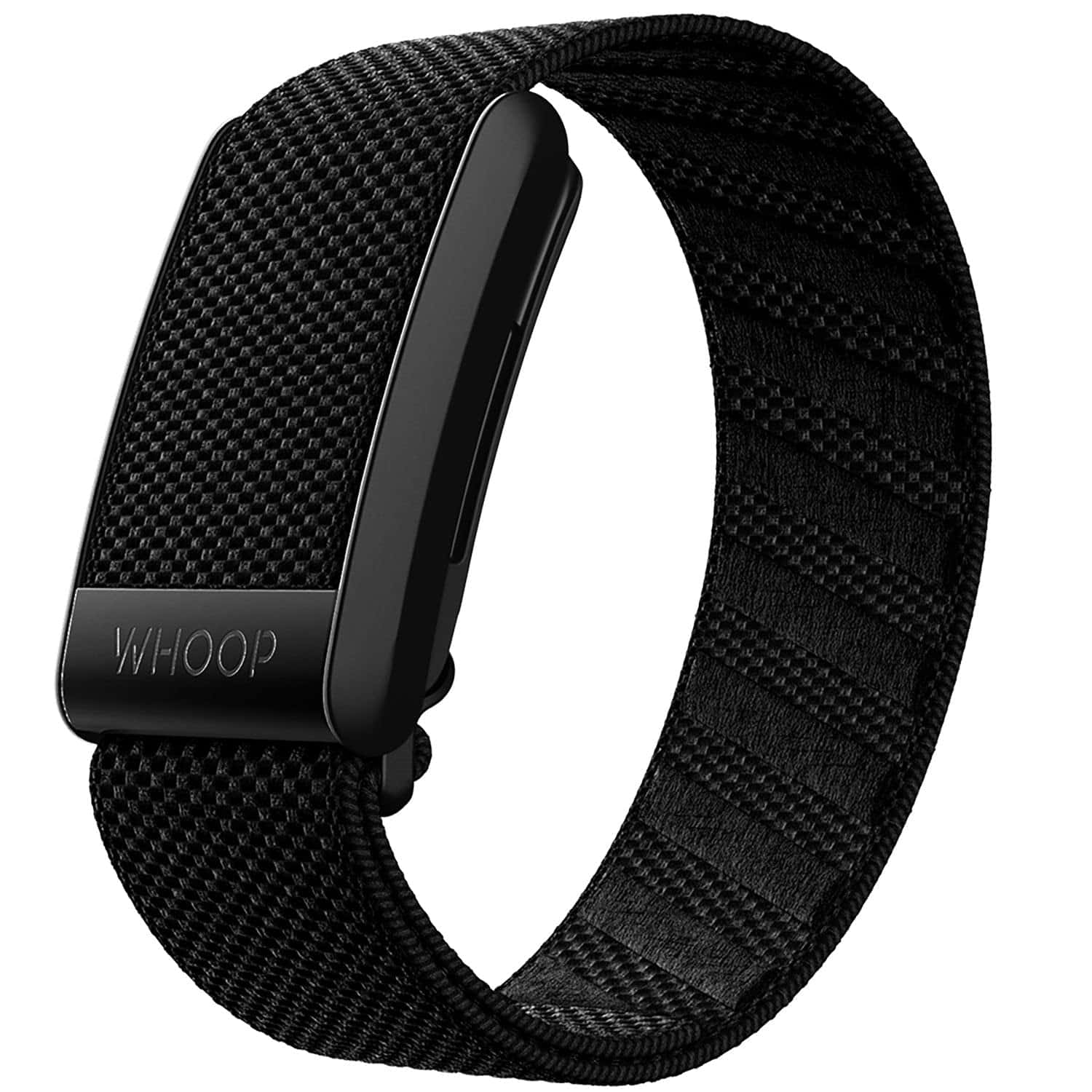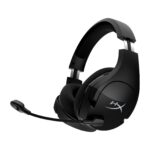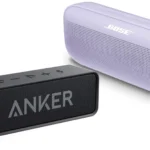Fitness enthusiasts and WHOOP users have been waiting for years now for a new device in the series (the rumored WHOOP 5.0) but so far we haven’t gotten many details on the update. Since the release of the WHOOP 4.0 in September 2021, technology—especially AI—has advanced significantly, fueling excitement and speculation about what the next generation might offer.
Fans are hoping for a sleeker, more compact design, enhanced features like hydration tracking, improved strap options, and even blood pressure monitoring. While WHOOP has yet to confirm the 5.0, many insiders predict a 2025 launch, aligning with the company’s strategy of refining the 4.0 while setting the stage for a major upgrade.
The Road to WHOOP 5.0: Why the Wait?
WHOOP has spent much of 2024 expanding the distribution of its 4.0 model, launching in new markets like India and rolling out significant software updates. This strategy highlights the company’s focus on maximizing the 4.0’s potential before introducing a new device. Historically, WHOOP has favored meaningful, user-driven upgrades over rushed product cycles, which is why many experts believe the 5.0 will be more than just a minor hardware refresh.
The WHOOP 4.0, released in September 2021, was praised for its compact design, improved sensors, and skin temperature tracking. However, nearly four years later, users are hungry for new features that align with the evolving landscape of health tech.

What Features Could WHOOP 5.0 Bring?
Industry insiders and user forums have been buzzing with speculation about the potential features of the WHOOP 5.0. Based on trends in wearable technology and WHOOP’s history of innovation, here’s what could be on the horizon:
- Advanced Biometrics
Rumors suggest that WHOOP 5.0 could introduce sensors capable of monitoring hydration levels and UV exposure—filling a gap in holistic health tracking. Some industry sources even speculate about blood pressure monitoring, a feature that would position WHOOP as a leader in next-gen wearables. - Enhanced Battery Life and Charging
One common user request is for a longer-lasting battery. WHOOP could respond with a battery upgrade, possibly alongside more efficient charging methods, such as solar-assisted technology or faster magnetic chargers. - Refined Design
WHOOP’s minimalist, screenless design has become its signature. While many users hope this remains intact, there’s potential for a slimmer, more durable band and enhanced water resistance for swimmers and divers. - AI-Powered Insights
With the growing integration of AI in fitness tracking, WHOOP 5.0 could leverage machine learning for more personalized recommendations—whether it’s sleep optimization, stress management, or training plans based on individual recovery scores.
How WHOOP 5.0 Could Shape the Future of Wearables
As competition heats up in the wearable market, WHOOP needs to differentiate itself not only through hardware but also through ecosystem expansion. Rivals like Garmin and Apple have doubled down on comprehensive health suites, including ECG readings and advanced stress monitoring.
WHOOP’s edge has always been its commitment to recovery-focused analytics—prioritizing strain, sleep, and readiness over simple step counting or calorie tracking. If the 5.0 introduces features like blood pressure monitoring or hydration tracking, it could solidify WHOOP as a go-to device for serious athletes and health-conscious users alike.
Moreover, there’s growing chatter about WHOOP integrating more seamlessly with third-party platforms, such as Strava or Apple Health, to improve data interoperability—something users have long requested.
Community Expectations and Reactions
WHOOP users are not shy about sharing their wishlist for the 5.0. A scan through online forums reveals top community desires:
- Customization Options: From strap materials to color choices, users want more ways to personalize their bands.
- More In-Depth Recovery Data: Athletes are pushing for even more granular insights into muscle recovery and post-exercise strain.
- Hardware Durability: Some users have expressed concerns about wear and tear on the 4.0 bands. They hope the 5.0 offers improved build quality, especially for high-intensity athletes.
Final Thoughts: Should You Wait for WHOOP 5.0?
If you’re a current WHOOP user or considering joining the ecosystem, the 5.0’s rumored features might be worth the wait. With a 2025 launch looking increasingly likely, the company appears to be doubling down on innovation rather than rushing to market.
In the meantime, WHOOP continues to roll out meaningful software updates for the 4.0, ensuring users still receive value. Features like stress monitoring, AI-driven recovery scores, and expanded global availability are clear indicators that WHOOP remains focused on user experience—even as it prepares for its next big leap.
Whoop 5.0 Wish List
As anticipation builds for the long-awaited Whoop 5.0, users have been vocal about the features they hope to see in the next iteration of this popular fitness tracker. While the Whoop 4.0 remains a strong contender in the market, fitness enthusiasts and tech-savvy users are eyeing improvements that could push the 5.0 to new heights. Based on community discussions, expert opinions, and current market trends, here’s the ultimate wish list for Whoop 5.0.
1. Smaller, Sleeker Design
A top request is a more compact form factor with reduced width. While the Whoop 4.0 already boasts a minimalist design, users want something even slimmer for improved comfort—especially for those wearing it 24/7.
2. Body Composition and Hydration Tracking
Devices like the Samsung Galaxy Watch 4 and the Amazon Halo Band have introduced bioelectrical impedance sensors to measure body fat percentage, muscle mass, and hydration levels. Whoop users hope for similar capabilities in the 5.0, giving deeper insights into body composition and fluid balance—critical metrics for serious athletes and fitness enthusiasts.
3. Blood Pressure Monitoring
While this technology is still maturing in wearables, blood pressure monitoring is high on users’ wish lists. Its integration could open doors for better health monitoring and enhance Whoop’s algorithm for detecting strength training and cardiovascular strain.
4. UV Exposure Monitoring
UV sensors are rare in wearables, but the addition of this feature could help users track sun exposure, promoting skin health and vitamin D optimization. Such a unique feature would give Whoop a competitive edge in the market.
5. Improved Strap Options
Many users have expressed interest in a high-quality rubber or silicone wristband option. These materials offer better grip and stability without the need to overtighten, making them ideal for high-intensity workouts and all-day wear.
6. Smart Wake-Up and Sleep Cycle Tracking
A long-standing request is for smart alarm integration, allowing the strap to wake users during the lightest phase of their sleep cycle for a more refreshed wake-up. While Whoop already excels at sleep tracking, this feature would make mornings smoother and improve overall recovery.
7. Real-Time Temperature and Stress Monitoring
While Whoop 4.0 tracks skin temperature passively, users want the ability to measure it on demand—especially for tracking illness or hormonal changes. Coupled with more advanced stress monitoring, this could offer users real-time feedback on both physical and emotional well-being.
8. Continuous Glucose Monitoring (CGM) Integration
Although continuous glucose monitoring in wearables remains in its infancy, users are hopeful that Whoop will either integrate non-invasive CGM or at least partner with existing CGM manufacturers. Blood sugar insights could revolutionize how athletes manage their nutrition and recovery.
9. Enhanced Strength Training Metrics
Strength training has often been a weak point for many wearables, but Whoop users want improvements in tracking load, reps, and muscle fatigue. Integration with chest strap heart rate monitors or even electromyography (EMG) sensors could significantly improve strength-based analytics.
10. Longer Battery Life with Smarter Charging
Battery life is always a major concern for fitness trackers, especially ones designed for 24/7 use. Users are hoping for a more efficient battery system, possibly with solar-assisted charging or an optimized battery pack that extends usage without adding bulk.
Bonus Features Users Are Dreaming Of:
- Body Basal Temperature Tracking for fertility and health monitoring.
- Sleep Cycle Alarms for waking at the optimal time.
- Customizable Journal Entries to log nutrition, medications, and unique health factors.
- Non-Invasive Glucose Monitoring for deeper health insights.
- GPS Integration for outdoor activities without needing a smartphone.
- Blood Alcohol Level Detection (a long shot, but requested!).
- Parental Mode that adjusts recovery expectations based on sleep disruptions from parenting.
The community’s wishlist highlights a desire for Whoop 5.0 to evolve from a simple fitness tracker into a comprehensive health management tool—one that not only tracks strain, recovery, and sleep but also adapts to users’ evolving health needs. Whether Whoop 5.0 will deliver on all these requests remains to be seen, but if even half of these features make it into the next model, it could set a new standard in the world of wearables.
Key Takeaways
- WHOOP 5.0 is expected to launch in 2025 based on current market indicators
- Recent software updates and global expansion suggest WHOOP is optimizing the 4.0 before releasing new hardware
- Industry experts anticipate significant technological improvements to maintain market leadership
Anticipated Features of WHOOP 5.0
The next generation WHOOP device is expected to bring significant upgrades to sensor technology, physical design, and power management capabilities. These improvements aim to enhance the accuracy of health tracking while providing a more comfortable and longer-lasting device experience.
Advancements in Biometric Tracking
The WHOOP 5.0 will likely feature enhanced biometric sensors for more precise health monitoring. Early rumors suggest improved heart rate variability (HRV) tracking through upgraded optical sensors.
Blood oxygen monitoring capabilities may see refinements with more frequent SpO2 readings throughout the day and night. This could help users better understand their sleep quality and recovery patterns.
The device might introduce new metrics for hydration tracking using advanced bioimpedance sensors. These sensors could measure fluid levels in the body to provide real-time hydration status updates.
UV exposure monitoring could be added to help users manage their sun exposure and outdoor activity timing. This feature would complement existing environmental health tracking capabilities.
Design and Durability Enhancements
A smaller and lighter form factor is anticipated for the WHOOP 5.0, making it more comfortable for 24/7 wear. The reduced size won’t compromise durability or sensor contact.
The band material may incorporate new antimicrobial properties to maintain better hygiene during intense workouts. Enhanced water resistance ratings could make the device more suitable for water sports.
The display interface might receive updates with haptic feedback improvements for better user interaction. This could make navigation more intuitive without adding unnecessary bulk.
Battery and Charging Developments
Battery life expectations point to a possible 7-10 day runtime, extending beyond the current model’s capabilities. This improvement would reduce charging frequency for users.
The charging system may switch to wireless charging technology, eliminating the need for proprietary charging slides. This change would align with modern device convenience standards.
Fast charging capabilities could be introduced, potentially offering a full day’s power from just 10-15 minutes of charging time. This feature would benefit users with busy schedules who can’t wait for long charging sessions.
Market Impact and Consumer Expectations
The anticipated WHOOP 5.0 launch shapes competitive dynamics in the fitness wearables market, with subscribers and competitors closely watching pricing, features, and technological advancements.
Comparison with WHOOP 4.0 and Competing Products
WHOOP 4.0 set high standards with its recovery tracking and sleep analysis features. The current model tracks heart rate variability (HRV), respiratory rate, and skin temperature with strong accuracy.
The fitness wearables market has evolved significantly since WHOOP 4.0’s release. Competitors like Garmin and Apple Watch now offer similar recovery metrics and sleep tracking capabilities.
Key differentiators for WHOOP remain its subscription-based model and focus on detailed athletic performance metrics. The 5.0 version needs substantial improvements to maintain market position.
Potential Pricing and Subscription Model
WHOOP’s current subscription starts at $30 monthly with a 12-month commitment. Industry analysts predict similar pricing for the 5.0 version.
The monthly subscription includes:
- Hardware upgrades every 2 years
- Full access to analytics platform
- Personal coaching features
- Team and group functionality
Premium tier options might expand with 5.0’s release, potentially offering advanced coaching features or specialized analytics packages.
WHOOP’s User Base and Its Growth
WHOOP’s user base spans professional athletes, fitness enthusiasts, and health-conscious individuals. The platform has seen steady growth among CrossFit athletes and endurance sports participants.
The delayed release to 2025 affects user retention strategies. Current subscribers continue receiving software updates for 4.0 devices, maintaining engagement.
Growth metrics show strong adoption in:
- Professional sports leagues
- College athletic programs
- Corporate wellness programs
- Personal training facilities
Recent partnerships with strength training apps and fitness platforms expand WHOOP’s reach in the connected fitness space.
Frequently Asked Questions
WHOOP 5.0’s development remains under wraps, with speculation about new features and timing driving intense interest among fitness enthusiasts and athletes.
What new features can we expect in the WHOOP 5.0 release?
Industry insiders suggest advanced sensor technology for more accurate health monitoring. The device may include new metrics for performance tracking and recovery analysis.
The updated hardware could feature improved battery life and a redesigned form factor. These changes would address common user requests from the 4.0 version.
When is the expected release date for WHOOP 5.0?
The most reliable estimates point to Q2 2025 as the earliest possible release window. This timing aligns with WHOOP’s recent expansion of 4.0 sales into new markets like India.
The company’s continued software updates for the 4.0 model indicate they’re still refining the current generation before launching new hardware.
Will WHOOP 5.0 have a different pricing model from its predecessors?
No pricing details have leaked for the WHOOP 5.0. The subscription-based model remains central to WHOOP’s business strategy.
Are there any confirmed enhancements in the WHOOP 5.0 over the previous versions?
WHOOP has not officially announced any specific improvements for the 5.0 model. The company maintains strict secrecy about future product developments.
The lack of official announcements suggests the features remain in active development.
What improvements in health monitoring will the WHOOP 5.0 offer?
Tech analysts predict enhanced sleep tracking capabilities and more detailed recovery metrics. The device might introduce new sensors for additional health parameters.
The focus appears to be on increasing measurement accuracy and expanding the range of tracked metrics.
Which professional athletes have been involved in testing or promoting the WHOOP 5.0?
No athletes have been publicly linked to testing or promoting the WHOOP 5.0. The company typically partners with professional athletes closer to product launch dates.
The current roster of WHOOP athletes continues to use and promote the 4.0 version.







